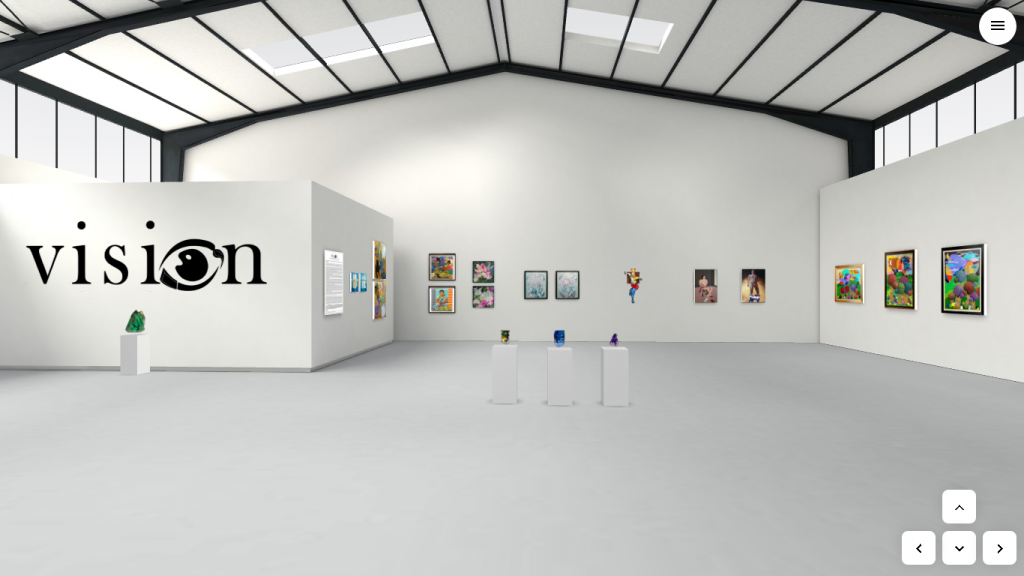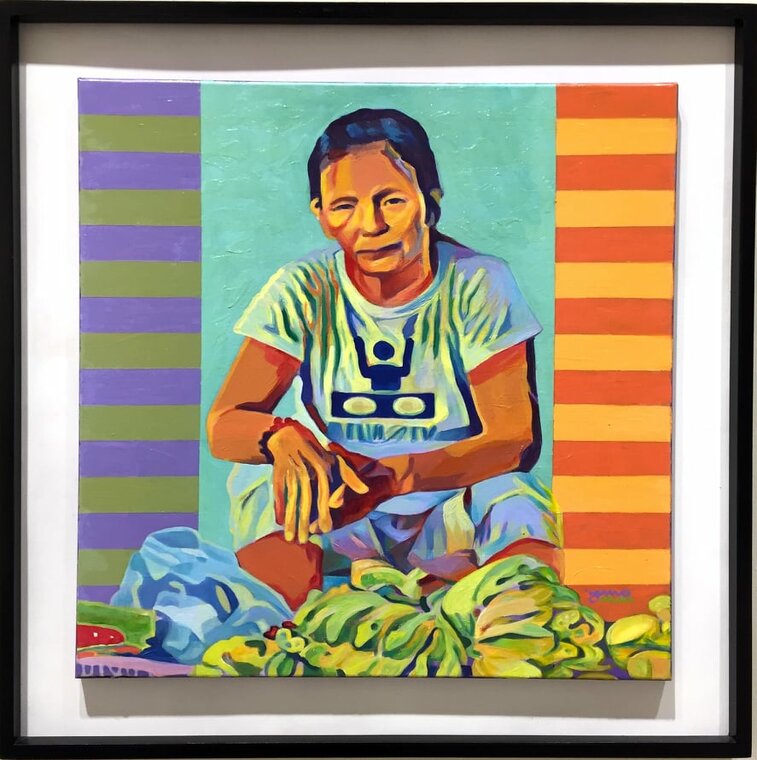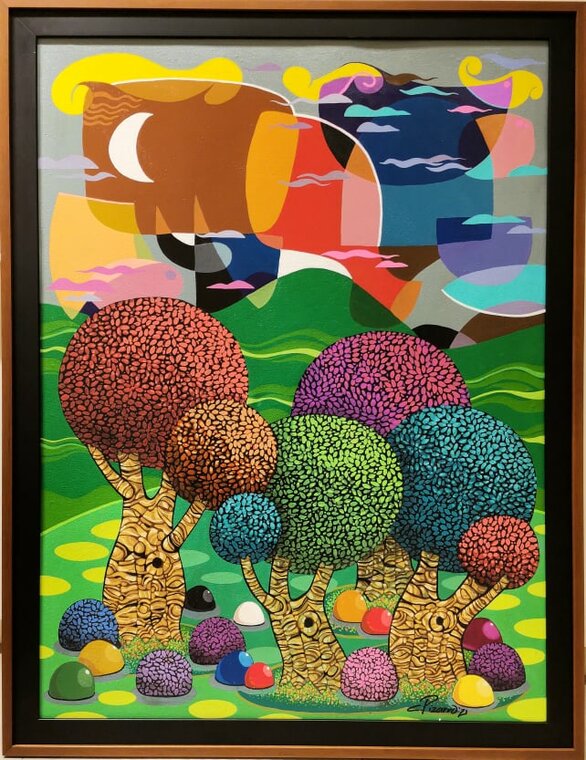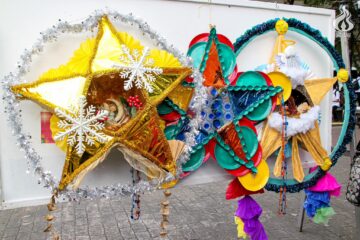by JOHN PATRICK A. MAGNO RANARA
FROM PREHISTORIC carvings to postmodern art styles, art has truly come a long way.
Thomasian alumni showcased the evolution of art in the newly-launched art exhibit titled Vision X Interpolation: All Thomasian Art Exhibition. It flaunted generational practices and stylisms embodied by 22 artists from the University through paintings, print, and sculptural works.

The exhibit was on display at Art Anton in Pasay City last Sept. 8 to Sept. 23. Despite COVID-19 lockdown restrictions, guests at home still had a chance to enjoy the artworks through a 360-degree virtual tour.
The theme of the exhibit revolves around interpolation, which pertains to an object’s insertion. According to the exhibit’s curator Abe Orobia’s write-up, interpolation in art is “a fundamental need in every artist to insert ideas and concepts that are different from a pre-existing or established norm in creation.”
Much like everything else in the world, art has gone through inevitable change as artists continue to re-examine, re-evaluate, and redefine the creation of art, giving birth to innovative styles and movements.
The exhibit displayed a total of 41 artworks by Thomasian artists, from accomplished seniors and mid-career artists to fresh graduates. The following works give just a glimpse at the various modern art techniques being practiced by today’s artists.
Saba Vendor by Juno Galang

From the title itself, Juno Galang’s artwork presents a rather familiar sight of a woman selling saba bananas, one of the varieties native to the Philippines. Though the concept is ordinary and mundane, Galang’s use of striking acrylic colors makes the artwork more unique and eye-catching.
His work may be rooted in pop-realism or contemporary realism movements—art styles that are characterized by their focus on painting everyday scenes or objects in real life.
As he finished an advertising course, Galang is perhaps encouraging viewers to promote the country’s products and culture.
Psychedelic Trees by Chris Pizarro

From the brilliant color palette to the distorted shapes and figures, the film “Alice in Wonderland” may have inspired Chris Pizarro’s work.
Depicting a strange land full of trees, the piece’s bizarre and hypnotic construction might make viewers feel as if they are falling into a lucid hallucination.
Pizarro has a fondness for portraying his subjects in figurative and abstract forms. In his other works, he shows his fascination with light by playing with vibrant, transparent, and solid colors.
Windfall by Milmar Onal

Milmar Onal’s Windfall centers on a soothing scenery of nature. Using metallic acrylic paint to form juxtaposed, multicolored, and textured elongated lines, Onal painted a field of wispy, brown grass being caressed by the gentle wind.
The crisp orange background of the setting sun further adds to the scene’s calming atmosphere.
Onal’s piece is reminiscent of pointillism, an art style that applies small strokes or dots of color on a surface to form images when looked at from a distance. Instead of tiny dots, however, Onal used rough lines to showcase movement and energy in the swaying grass, thus capturing the evening breeze.
PaniBughaw 1 by Fil Delacruz

National Artist nominee and master printmaker Fil Delacruz’s works revolve around stunning renditions of local mythology and folklore.
This is seen in the work PaniBughaw, which is a delicate and ethereal image of a goddess. She seems to be a deity of the skies, as signified by her flowing garments, her small feathered friend, and the image being bathed in varying shades of mystic blue.
However, the most distinguishable feature of the artwork is the goddess’ hair. Delacruz made use of wavy lines to illustrate her gentle control of the wind. This was done with careful and expert strokes, resulting in a three-dimensional effect.
Perhaps it is not amiss to say that today’s artists and their masterpieces would not be what they are if not for the historical works that they took inspiration from.
Vision X Interpolation demonstrated that art is a continuously changing landscape, and that Thomasian artists are thriving in it because of their drive to look at art from new angles and perspectives. F



